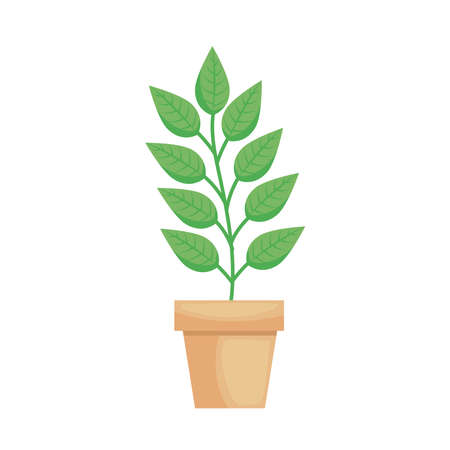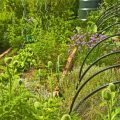Mixing Incompatible Plant Species
One of the most common companion planting errors is mixing plant species that are not compatible with each other. While the idea behind companion planting is to create a mutually beneficial environment, placing plants with conflicting needs or allelopathic tendencies can actually stunt growth or reduce your garden’s productivity. For example, some plants release chemicals into the soil that inhibit the growth of neighboring species—a phenomenon known as allelopathy. Additionally, combining plants that require different amounts of sunlight, water, or nutrients can lead to poor performance for both. To help you avoid these mistakes, check out the table below highlighting common incompatible pairings and their negative effects:
| Plant Pairing | Why They’re Incompatible | Negative Impact |
|---|---|---|
| Tomatoes & Potatoes | Both are nightshades and susceptible to similar diseases | Increased risk of blight and reduced yields |
| Beans & Onions | Onions release compounds that inhibit bean growth | Poor bean germination and stunted plants |
| Cabbage & Strawberries | Cabbage family outcompetes strawberries for nutrients | Weakened strawberry plants, fewer berries |
| Carrots & Dill | Dill can stunt carrot growth due to allelopathic effects | Deformed or undersized carrots |
Avoiding these incompatible combinations ensures your garden thrives and that each plant gets what it needs to grow strong and healthy. Always research specific plant relationships before planning your beds, and remember: what works for one region may not always be suitable for another, especially when gardening in diverse American climates.
2. Overcrowding Your Garden Beds
One of the most common mistakes in companion planting is overcrowding your garden beds. While it’s tempting to maximize space by squeezing in as many plants as possible, planting too densely—especially under the guise of “companion planting”—can backfire in several ways. Too many plants competing for the same resources often results in stunted growth and a stressed garden environment.
When plants are packed closely together, airflow is significantly reduced. Poor air circulation creates a humid microclimate around foliage, which encourages the development and spread of fungal diseases such as powdery mildew and blight. Additionally, crowded conditions make it more difficult for leaves to dry after watering or rain, further increasing the risk of plant diseases.
Overcrowding also means that roots compete fiercely for water and nutrients, leading to weaker plants with poor yields. Even when using classic companion plant pairings—like tomatoes and basil or carrots and onions—it’s essential to provide each plant with enough space to thrive.
| Problem | Cause | Negative Effect |
|---|---|---|
| Disease Spread | Poor airflow between dense plants | Fungal infections (e.g., powdery mildew) |
| Stunted Growth | Competition for water & nutrients | Smaller, weaker plants |
| Poor Harvest Quality | Lack of sunlight & root space | Lower yields and less flavorful produce |
To avoid these issues, always refer to spacing guidelines specific to each crop—even when practicing companion planting. Give your veggies room to breathe, soak up the sun, and access nutrients without battling their neighbors. Proper spacing helps ensure that both your companions and your harvests stay healthy throughout the growing season.
![]()
3. Ignoring Sun and Water Requirements
One of the most common companion planting mistakes is overlooking the basic needs of each plant, especially when it comes to sunlight and water. Even if two plants are known companions, placing a sun-loving vegetable next to a shade-tolerant herb can result in stunted growth or stressed-out plants. In the U.S., where climate and sunlight intensity vary greatly from region to region, it’s essential to group your companion plants by their similar requirements for best results.
Why Sunlight and Water Matter
Plants that thrive together typically share similar growing conditions. If you pair a drought-tolerant herb with a moisture-loving veggie, one will likely suffer. Likewise, mixing full-sun crops with partial-shade lovers can lead to disappointment at harvest time.
Common Examples of Poor Pairings
| Plant 1 | Sun Needs | Water Needs | Poor Companion |
|---|---|---|---|
| Tomatoes | Full Sun | Moderate | Lettuce (prefers cooler temps and more water) |
| Cilantro | Partial Shade | High | Rosemary (needs drier soil and more sun) |
Tips for Success
- Group plants with similar light and water needs together.
- Observe your garden throughout the day to ensure even sun exposure for grouped companions.
- Consider using raised beds or separate containers for tricky combinations.
By paying close attention to each plant’s preferred conditions, you’ll avoid many of the common pitfalls associated with companion planting and give your entire garden a much better shot at thriving all season long.
4. Believing Companion Myths Without Evidence
It’s easy to get caught up in the excitement of companion planting, but not all advice you find online or in gardening books is backed by science. Many “tried and true” combinations are actually based on folklore or outdated practices that may not hold up under modern research. Relying on these myths without solid evidence can lead to disappointing results—or even harm your garden. For example, some sources claim that planting tomatoes and potatoes together will repel pests, when in reality, both are susceptible to similar diseases like blight and can increase each others risk.
For American gardeners, it’s crucial to prioritize recommendations from reputable sources such as university extension services, which conduct region-specific research. These organizations provide science-based guidance tailored to local conditions. When folklore advice contradicts extension recommendations, always defer to the experts.
| Common Myth | Folklore Claim | Extension Recommendation |
|---|---|---|
| Tomatoes & Potatoes | Plant together for mutual benefit | Avoid planting together; increases disease risk |
| Beans & Onions | Onions enhance bean growth | Avoid planting together; onions may stunt beans |
| Basil & Cucumbers | Basil improves cucumber flavor | No scientific support for this claim |
If you’re ever unsure about a companion planting combination, check your state’s cooperative extension website or consult a local master gardener. Don’t let myths dictate your planting plan—let evidence guide your choices for a thriving, productive garden.
5. Neglecting Crop Rotation with Companions
One of the most overlooked errors in companion planting is failing to rotate crops and their companions each season. While planting basil next to tomatoes or beans near corn can offer clear benefits, replanting these same pairs in the same spot year after year can actually harm your garden. This practice depletes the soil of specific nutrients that those plant combinations require most, leading to stunted growth and lower yields over time. Additionally, pests and diseases that target certain plant families may build up in the soil, making your garden more vulnerable to infestations.
Why Crop Rotation Matters:
| Problem | Effect of No Rotation | How Rotation Helps |
|---|---|---|
| Nutrient Depletion | Soil loses key nutrients needed by the same companion plants. | Different crops use different nutrients, allowing soil to recover. |
| Pest Build-up | Pests and pathogens become established and overwinter in the same area. | Moving crops disrupts pest lifecycles, reducing populations naturally. |
Best Practices for Rotating Companion Groups
- Group your vegetables by plant family (e.g., nightshades, legumes, brassicas).
- Rotate these groups to new spots each year—ideally on a three- or four-year cycle.
- Avoid planting the same companions or plant families in one bed two years in a row.
Sample Crop Rotation Schedule
| Year 1 | Year 2 | Year 3 |
|---|---|---|
| Tomato & Basil | Beans & Corn | Cabbage & Dill |
Tip:
If you’re gardening in raised beds or small spaces, keep notes or a simple map of where you plant each group every season. This helps ensure you don’t repeat last year’s layout and keeps your soil—and harvests—healthy for years to come.
6. Overlooking Native Pollinator Support
One of the most overlooked errors in companion planting is failing to support native pollinators. In the U.S., bees, butterflies, and other beneficial insects are essential for fruit and vegetable production. While many gardeners focus on pairing vegetables for pest control or nutrient sharing, neglecting to plant native flowers and herbs can limit pollination and reduce yields.
Why Native Plants Matter
Native plants have co-evolved with local pollinators. When you incorporate them into your garden as companions, you provide food sources and habitats that attract these helpful insects. This not only improves pollination for your crops but also boosts overall biodiversity, making your garden more resilient to pests and diseases.
Popular Native Flowers & Herbs for U.S. Gardens
| Region | Native Flower/Herb | Attracts |
|---|---|---|
| Northeast | Bee Balm (Monarda), Goldenrod | Bees, Butterflies |
| Southeast | Black-eyed Susan, Coreopsis | Butterflies, Bees |
| Midwest | Purple Coneflower (Echinacea), Wild Bergamot | Bees, Moths |
| West Coast | California Poppy, Yarrow | Bees, Ladybugs |
| Southwest | Desert Marigold, Penstemon | Hummingbirds, Bees |
How to Incorporate Native Plants in Companion Planting
– Border your vegetable beds with strips of native wildflowers.
– Interplant herbs like lavender or mint among tomatoes and peppers.
– Allow sections of your garden to remain “wild” to provide natural habitats.
– Rotate flowering natives throughout the season to ensure continuous blooms.
By intentionally supporting native pollinators through strategic companion planting with local flowers and herbs, you enhance garden productivity while contributing to ecological health. Don’t let this simple oversight undermine your gardening efforts—embrace native biodiversity for a thriving American garden.


